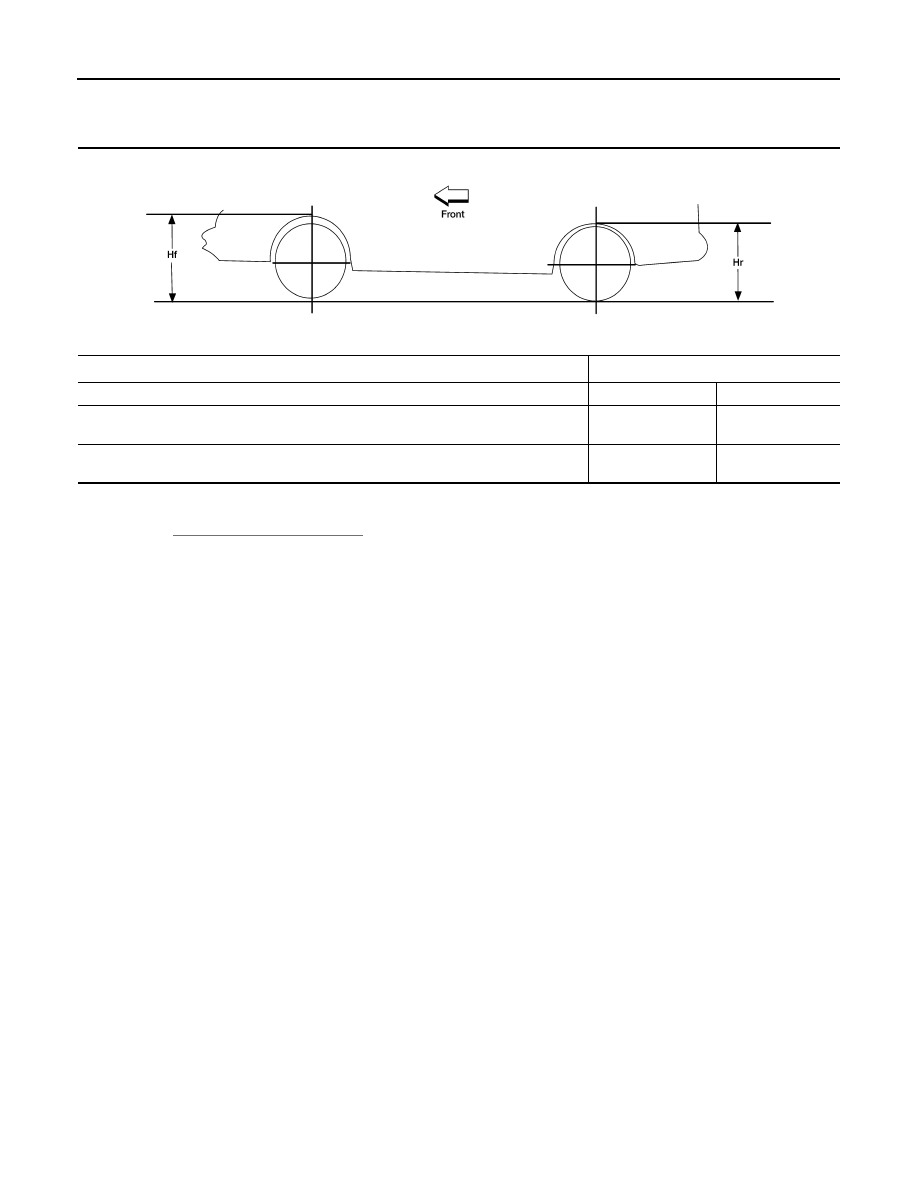Infiniti QX56 (JA60). Manual - part 805

RSU-30
< SERVICE DATA AND SPECIFICATIONS (SDS)
SERVICE DATA AND SPECIFICATIONS (SDS)
Wheelarch Height (Unladen*
1
)
INFOID:0000000005148144
Unit: mm (in)
*1: Fuel, engine coolant and engine oil full. Spare tire, jack, hand tools and mats in designated positions.
*2: Verify the vehicle height. If vehicle height is not within
± 10 mm (0.39 in) of the specification, perform the control unit initialization pro-
cedure. Refer to
RSU-26, "Initialization Procedure"
Suspension type
Air leveling*
2
Applied model
2WD
4WD
Front wheelarch height (Hf)
920
(36.22)
937
(36.89)
Rear wheelarch height (Hr)
917
(36.10)
937
(36.89)
LEIA0085E